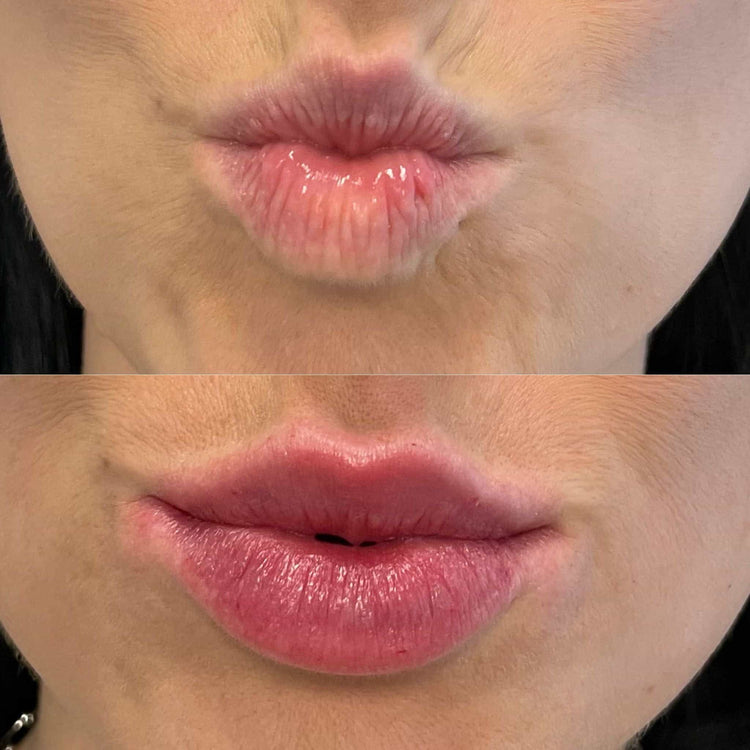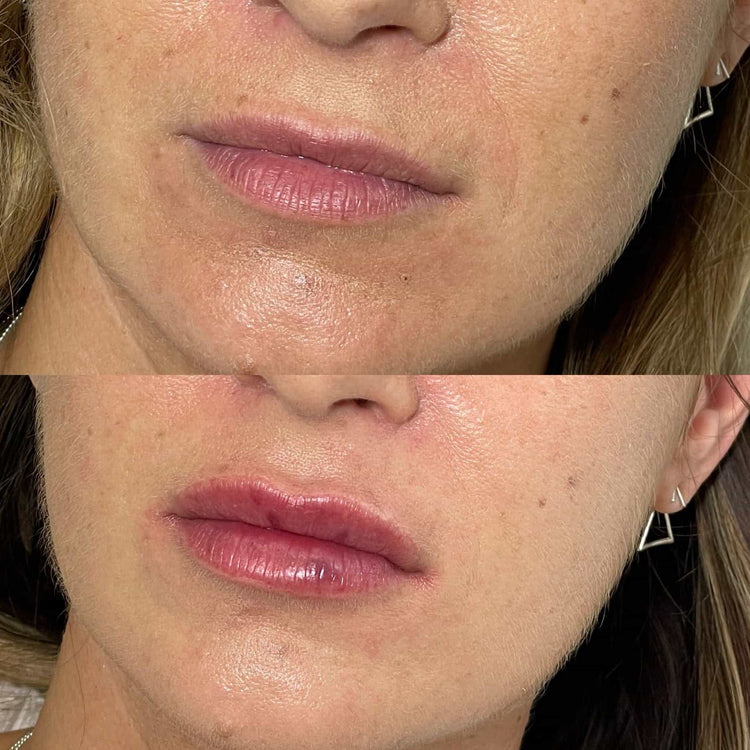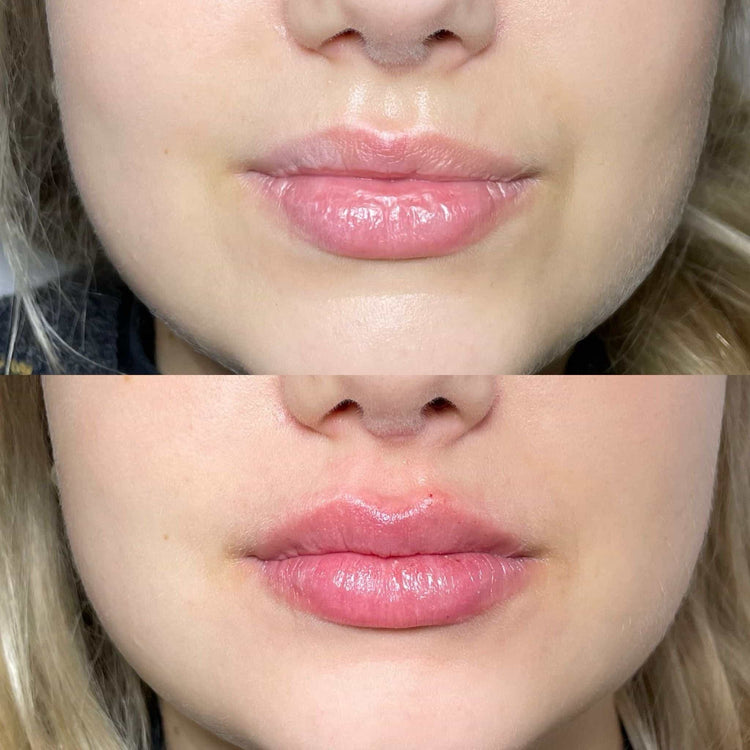Timeline of Filler Dissolving Treatment

Dermal fillers, though popular for their ability to temporarily restore volume and smooth wrinkles, can sometimes lead to dissatisfaction or unwanted results. Fortunately, a solution exists: filler dissolving treatment. This process utilizes an enzyme called hyaluronidase, which breaks down hyaluronic acid, the main component of most dermal fillers. Understanding the timeline for this treatment is essential for managing expectations and achieving desired outcomes.
Initial Effects
The effects of filler dissolving treatment typically become noticeable within a few hours to several days after administration. Initially, you may experience mild swelling, redness, or bruising at the injection site as your body begins to break down the filler. Over the next few weeks, the dissolved filler is gradually absorbed by your body.
It’s important to note that complete dissolution of the filler can take several weeks or even months, depending on the type and amount of filler used, individual metabolism, and other factors. Regular follow-up appointments with your injector are crucial for monitoring progress and ensuring optimal results.
Immediate Results
The effects of filler dissolving treatment typically become noticeable within a few hours to several days after administration. Initially, you may experience mild swelling, redness, or bruising at the injection site as your body begins to break down the filler. Over the next few weeks, the dissolved filler is gradually absorbed by your body.
It’s important to note that complete dissolution of the filler can take several weeks or even months, depending on the type and amount of filler used, individual metabolism, and other factors. Regular follow-up appointments with your injector are crucial for monitoring progress and ensuring optimal results.
First Few Days to Weeks
The effects of filler dissolving treatment typically become noticeable within a few hours to several days after administration. Initially, you may experience mild swelling, redness, or bruising at the injection site as your body begins to break down the filler.
Over the next few weeks, the dissolved filler is gradually absorbed by your body. It’s important to note that complete dissolution of the filler can take several weeks or even months, depending on the type and amount of filler used, individual metabolism, and other factors.
Regular follow-up appointments with your injector are crucial for monitoring progress and ensuring optimal results.

Full Dissolution
The effects of filler dissolving treatment typically become noticeable within a few hours to several days after administration. Initially, you may experience mild swelling, redness, or bruising at the injection site as your body begins to break down the filler.
Over the next few weeks, the dissolved filler is gradually absorbed by your body. It’s important to note that complete dissolution of the filler can take several weeks or even months, depending on the type and amount of filler used, individual metabolism, and other factors.
Regular follow-up appointments with your injector are crucial for monitoring progress and ensuring optimal results.
Factors Affecting Dissolution Time
The effects of filler dissolving treatment typically become noticeable within a few hours to several days after administration. Initially, you may experience mild swelling, redness, or bruising at the injection site as your body begins to break down the filler. Over the next few weeks, the dissolved filler is gradually absorbed by your body.
It’s important to note that complete dissolution of the filler can take several weeks or even months, depending on the type and amount of filler used, individual metabolism, and other factors such as the location where the filler was injected. Regular follow-up appointments with your injector are crucial for monitoring progress and ensuring optimal results.
Types of Fillers
Dermal fillers, though popular for their ability to temporarily restore volume and smooth wrinkles, can sometimes lead to dissatisfaction or unwanted results. Fortunately, a solution exists: filler dissolving treatment. This process utilizes an enzyme called hyaluronidase, which breaks down hyaluronic acid, the main component of most dermal fillers.

The effects of filler dissolving treatment typically become noticeable within a few hours to several days after administration. Initially, you may experience mild swelling, redness, or bruising at the injection site as your body begins to break down the filler. Over the next few weeks, the dissolved filler is gradually absorbed by your body.
It’s important to note that complete dissolution of the filler can take several weeks or even months, depending on the type and amount of filler used, individual metabolism, and other factors such as the location where the filler was injected. Regular follow-up appointments with your injector are crucial for monitoring progress and ensuring optimal results.
There are various types of dermal fillers available, each with its own unique properties and intended uses. Hyaluronic acid fillers, like Restylane and Juvederm, are among the most common. These fillers attract water molecules, providing volume and hydration to the skin.
Other types of fillers include collagen, poly-L-lactic acid (PLLA), and calcium hydroxylapatite. Collagen is a naturally occurring protein that adds volume and support to the skin, while PLLA stimulates the body’s own collagen production for long-lasting results. Calcium hydroxylapatite is another synthetic filler that provides volume and can also help improve skin texture.
Individual Variation
The effects of filler dissolving treatment typically become noticeable within a few hours to several days after administration. Initially, you may experience mild swelling, redness, or bruising at the injection site as your body begins to break down the filler. Over the next few weeks, the dissolved filler is gradually absorbed by your body.
It’s important to note that complete dissolution of the filler can take several weeks or even months, depending on the type and amount of filler used, individual metabolism, and other factors such as the location where the filler was injected. Regular follow-up appointments with your injector are crucial for monitoring progress and ensuring optimal results.
- The timeline for complete dissolution can vary significantly based on these factors:
- Type of Filler: Different fillers have varying compositions and densities, affecting how quickly they break down.
- Amount of Filler: Larger injections take longer to dissolve than smaller ones.
- Individual Metabolism: Each person’s body processes substances at a different rate.
- Injection Site: Fillers injected in areas with higher blood flow tend to dissolve faster.
Long-Term Considerations
Dermal fillers can offer temporary improvements to facial appearance, but sometimes results may not meet expectations or change over time. Thankfully, there is a solution: filler dissolving treatment. This procedure utilizes an enzyme called hyaluronidase to break down the hyaluronic acid found in most dermal fillers. Understanding how long it takes for this process to work is crucial for patients seeking to reverse unwanted filler effects.
Residual Effects
Long-term considerations are important when thinking about filler dissolving treatment. While the initial effects may be noticeable within a few days, complete dissolution can take several weeks or even months. This timeframe depends on various factors, including the type and amount of filler used, individual metabolism, and the location where the filler was injected.
It’s crucial to attend all follow-up appointments with your injector to monitor progress and ensure optimal results. They can assess your individual situation and provide guidance on managing any potential residual effects.
Residual effects from dissolved filler are generally minimal and temporary. You might experience mild swelling, redness, or bruising at the injection site for a few days to a week as your body processes the broken-down filler material.
In rare cases, some individuals may experience persistent lumps or irregularities where the filler was originally placed. If this occurs, additional treatment with hyaluronidase may be necessary.
Future Filler Treatments
Long-term considerations are important when thinking about filler dissolving treatment. While the initial effects may be noticeable within a few days, complete dissolution can take several weeks or even months. This timeframe depends on various factors, including the type and amount of filler used, individual metabolism, and the location where the filler was injected.
- Type of Filler: Different fillers have varying compositions and densities, affecting how quickly they break down.
- Amount of Filler: Larger injections take longer to dissolve than smaller ones.
- Individual Metabolism: Each person’s body processes substances at a different rate.
- Injection Site: Fillers injected in areas with higher blood flow tend to dissolve faster.
It’s crucial to attend all follow-up appointments with your injector to monitor progress and ensure optimal results. They can assess your individual situation and provide guidance on managing any potential residual effects.
Restore a more balanced and natural lip shape with Dr. Laura Geige at It’s Me & You Clinic.
- Juvederm Volite Skin Booster Treatments Near Chessington, Surrey - October 3, 2025
- Light Eyes Ultra – Dark Circles Treatment Near Hale, Surrey - October 2, 2025
- Jaw Slimming & Square Face Treatment Near Capel, Surrey - September 30, 2025